It is early on a clear morning, so the heat hasn’t taken hold yet. Kevin Bouchey and I exchange greetings just outside of Toppenish before I hop in his truck to head south. A few miles later, turning right on Schuster off Indian Church Road, we arrive. Although the morning is fresh for me, this potato harvest has been going on for about four hours already. We pull in just as a load is wrapping up. It’s quite a sight. The full truck has potatoes mounded high along its entire length. Their thin yellow-gold skins contrasting nicely with the bright blue sky of early morning. I’m glad I get to see it before it’s covered and driven off to be cleaned up and shipped out. These little bad boys are chipping potatoes. Twenty-four hours from now, they will be transformed into the crisp treat found on the inside of a Tim’s Cascade Style Potato Chips bag.
My family is Tim’s obsessed. The signature red bag with the white stripes has long been a favorite of ours. At any given time, a bag of thick cut original or salt and vinegar goodness can be found in our snack drawer, ready to be fought over by my daughters. The fact that their spuds are grown in the Northwest is awesome, but the fact that some are grown right in my backyard here in the Yakima Valley is the bee’s knees.
Kevin’s grandfather began growing potatoes in the Toppenish area in 1918. Ninety-nine years later, SKD Farms is representing their potato legacy nicely. 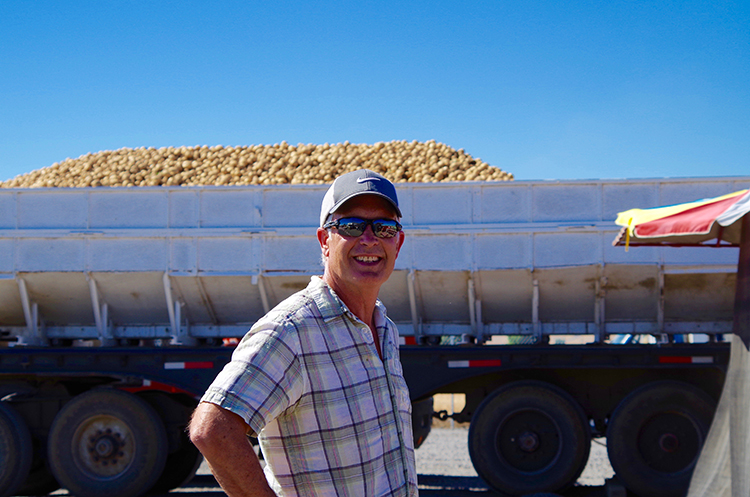 Kevin says there is a definite art to growing quality spuds, “They’re always looking for a reason to die,” he tells me. They don’t like it too hot or too cold, too wet or too dry, among other things, so finessing that sweet spot is paramount. “I really love it,” he says. Potato land has to be rotated regularly as well. Potatoes can only be grown for one season before being rotated out for the next 4-5 years, making long term field planning essential. With the help of his longtime foreman, Javier Chavez who started working the potatoes when he was 18, they hit that sweet spot year after year.
Kevin says there is a definite art to growing quality spuds, “They’re always looking for a reason to die,” he tells me. They don’t like it too hot or too cold, too wet or too dry, among other things, so finessing that sweet spot is paramount. “I really love it,” he says. Potato land has to be rotated regularly as well. Potatoes can only be grown for one season before being rotated out for the next 4-5 years, making long term field planning essential. With the help of his longtime foreman, Javier Chavez who started working the potatoes when he was 18, they hit that sweet spot year after year.
Because of the climate, the Valley has the ability to produce an earlier crop. That’s what originally got him patched in to the chip world back in the 1980’s. A relationship with Nally’s parlayed itself into his current long time relationship with Tim’s. Being able to harvest early is a definite bonus for a product that is made year-round. Kevin tells me that they have a two-month window in the summertime where they are the sole provider of every potato chip going into a bag at Tim’s (The Hawaiian brand is also made by Tim’s). In addition to an early pick, the soil composition of the Yakima Valley grows a more solid potato, making his, a premium product. If you consider that it takes about four pounds of potatoes to make one pound of chips, a denser potato might shave a bit off that ratio. Even if it’s just a little, when you’re talking tonnage, a little goes a long way.
As we stand under the clear blue sky watching the digger unearth rows of plants, sorting and separating the spuds from their leafy above ground portion, I feel like I’m getting my PhD in Potato. They grow underground and are actually planted in hills so that the digging by the potato harvester isn’t deep, it just has to skim the mounded rows. Starting in about march, seed potatoes are planted. It takes 100 days to grow, so plantings are staggered to ensure a continual harvest throughout the summer. A potato actually matures and develops a thicker skin in the ground after the top plant dies, a process known as senescence, but being that these are chipping potatoes, they are dug green, the above ground portion of the plant, I can see, is alive all around us. Kevin digs with his hands into a hill to fish out an example for me. Its size is a good rounded handful, the skin is thinner—perfect for a chip.
We head over to the staging area where the spuds will be washed and shipped out. They come out of one truck gritty with earth, and are sorted and washed, only to go into another truck as spiffy, clean potatoes. 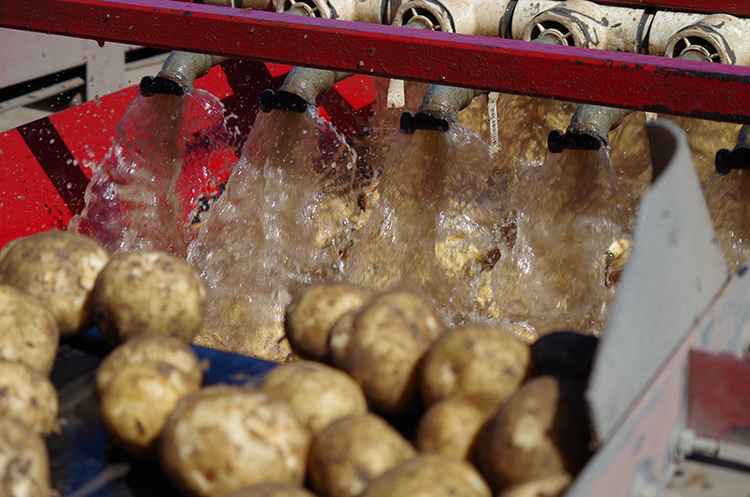
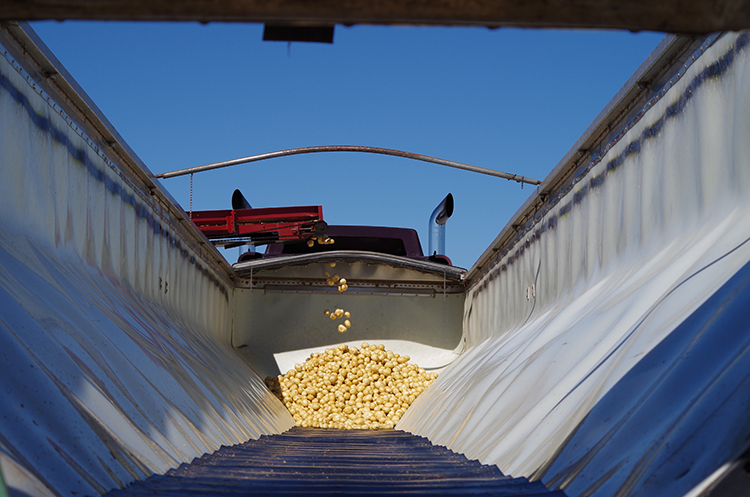 They don’t have a long way to go to reach their final destination, just a quick trip west over the mountains to Algona, Washington. Within a day, they will be magically transformed into the most iconic snack food ever produced, that kitchen shelf staple with just the right amount of salt to crunch. And it all started in a mound of good dirt, right here in the Yakima Valley.
They don’t have a long way to go to reach their final destination, just a quick trip west over the mountains to Algona, Washington. Within a day, they will be magically transformed into the most iconic snack food ever produced, that kitchen shelf staple with just the right amount of salt to crunch. And it all started in a mound of good dirt, right here in the Yakima Valley.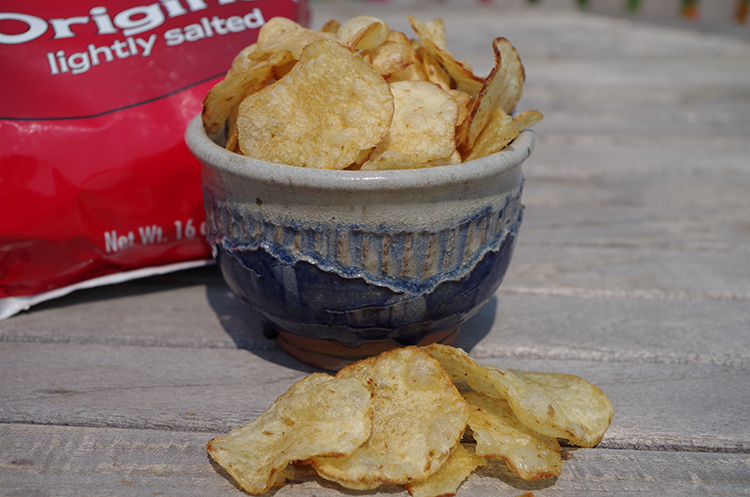

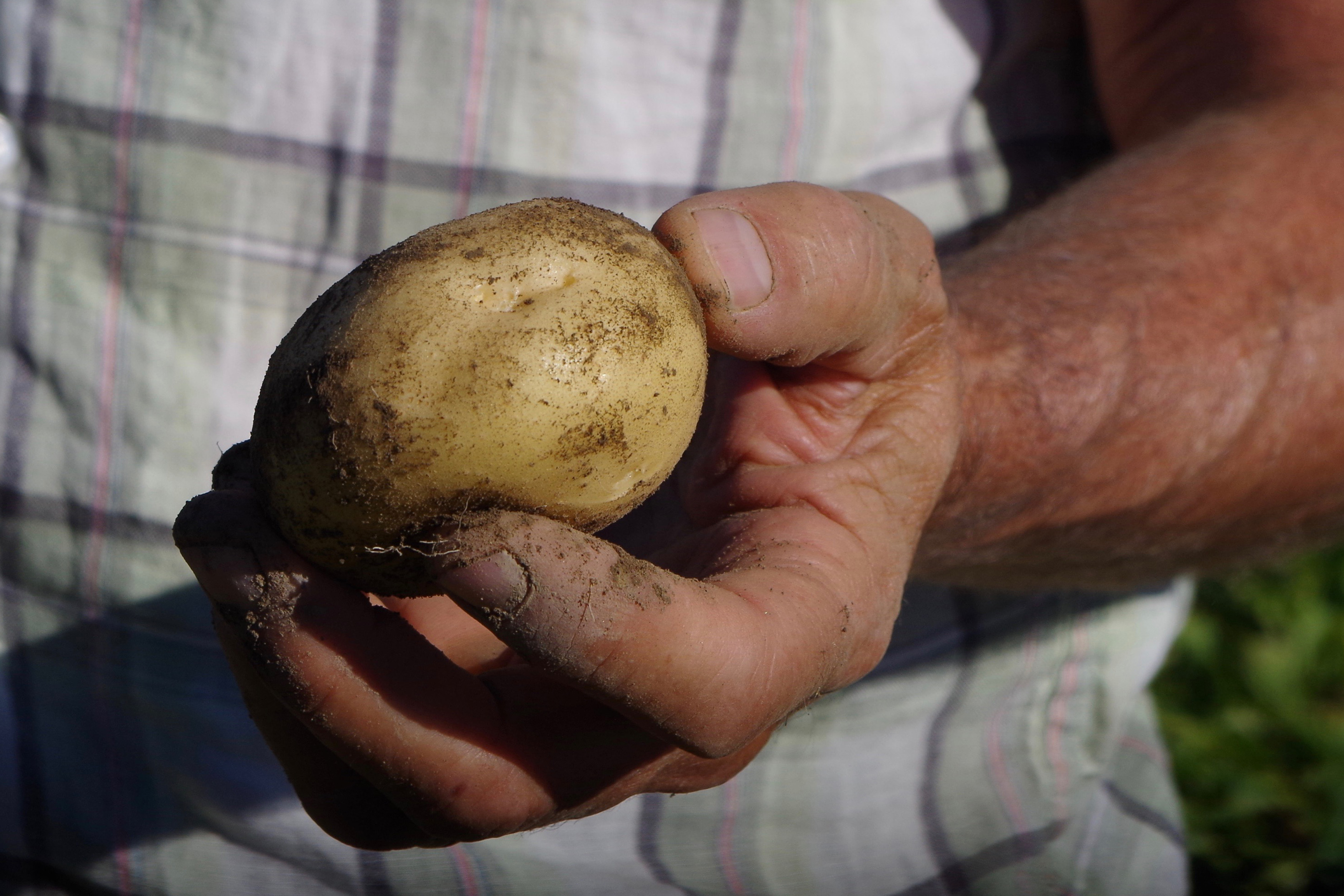





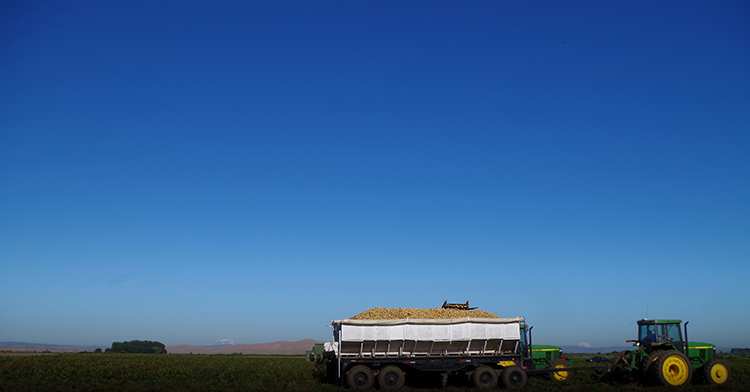
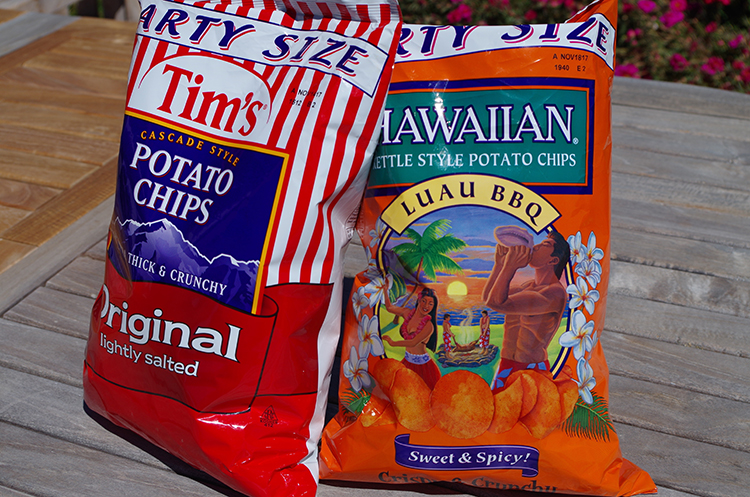

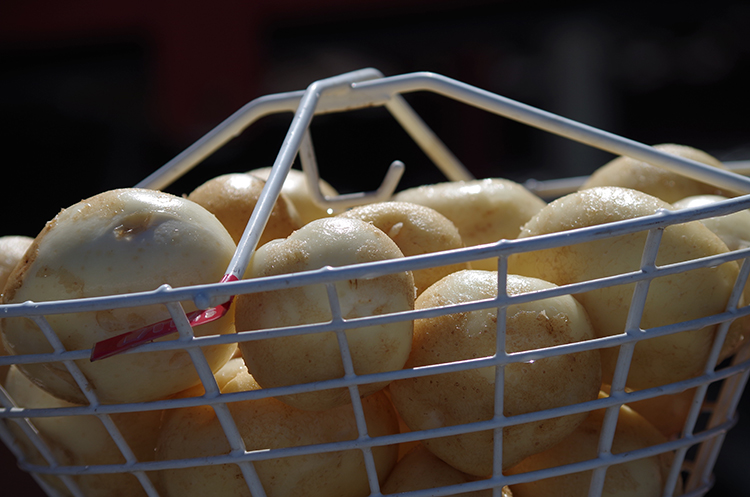
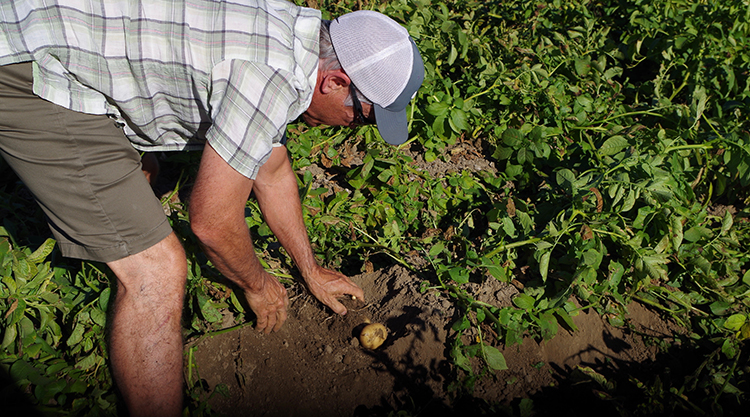

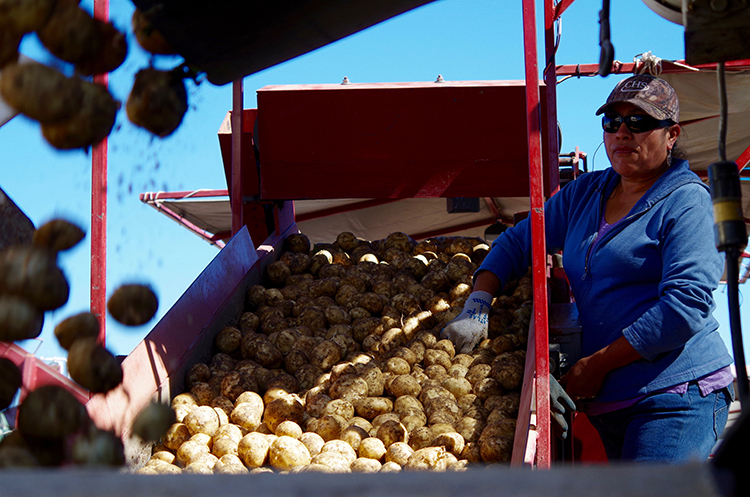
Very nicely written and excellent photographs. And what a surprise to find a bowl from us holding the luscious chips at the bottom of the article. I had no idea that chipping potatoes had to be harvested earlier than regular potatoes, so thanks for educating me as well as well as providing a good read.
Tim’s Cascade #1 !!
I’m proud of you hard working chippers. I’m a Seattlelite now but many years ago, I grew up in potato land Yakima valley when we use to have potato warehouses up and down Wapato. That’s when potatoes use to be hand picked in early crack of dawn mornings. I was one of those hand pickers, along with my brothers and cousins. That’s history. Be proud and glad to see papas are part of Tim’s. My fav are the Hawaiian chips. God blessings.
Keep up the good work girls. Your articles will be a treasure for the future generations that live here to read.